If you’re in the chicken business in any capacity, you likely know how important it is to correctly sex a chicken. It doesn’t matter if you’re buying, selling or simply looking to sort new chicks into your flock, being able to accurately sex a chicken while it’s still small is a very important skill to have.

It’s also very hard to do.
Luckily, there are a few different ways to sex a chicken, and if one way doesn’t work for you, you can always try another.
Venting
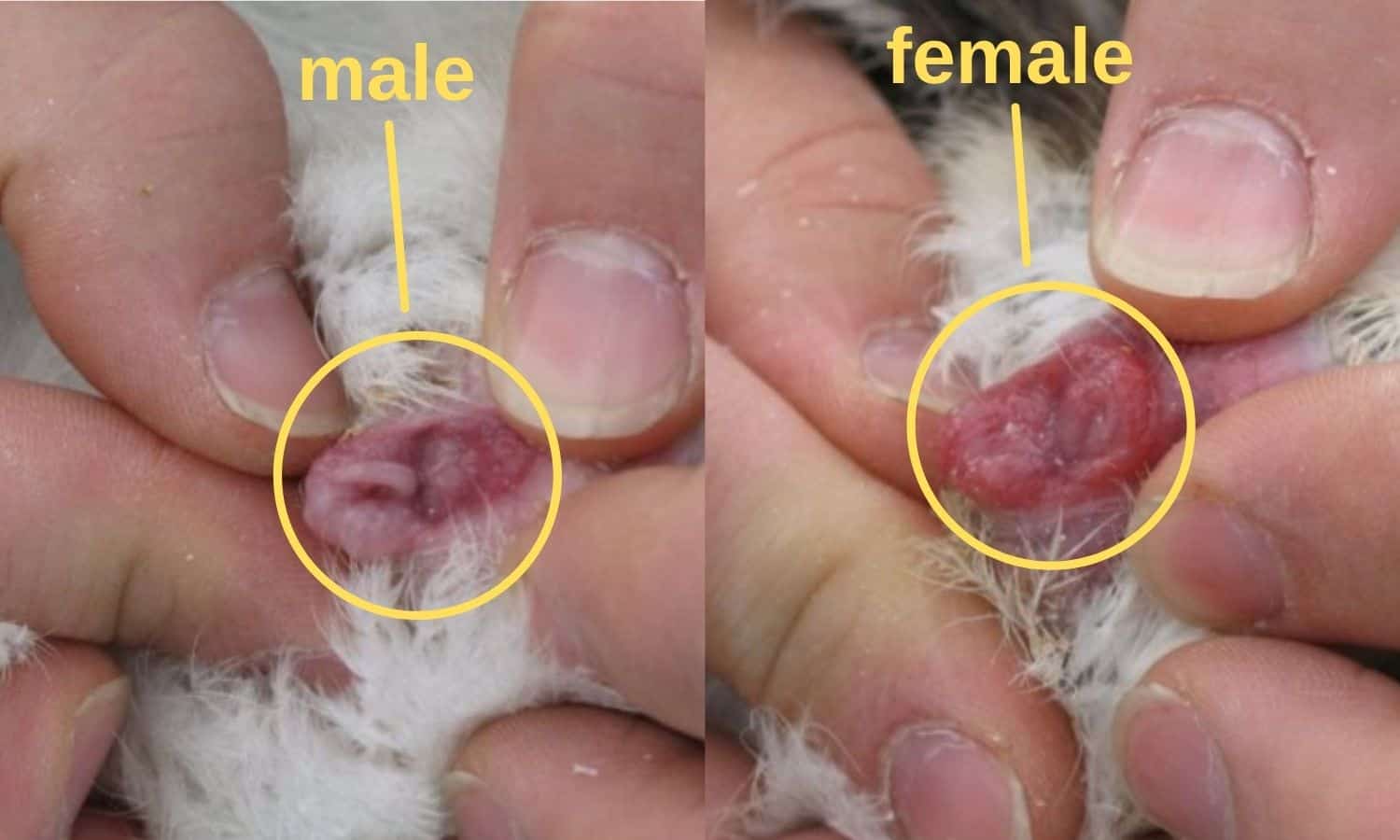
The most accurate and successful way to sex a chicken is known as venting or vent sexing. However, it’s also quite difficult and takes someone with a lot of skill to do.
Venting works best on one-day-old chicks. With this method, you hold the one-day-old baby chick in your hand and push it down slightly below the vent so as to spread it open. This allows you to actually see the chick’s sex organs to tell if it’s a male or female.
Male and female sex organs can look remarkably similar in chicks this young, so while venting is the most reliable way to sex a chicken, it’s still tough. It takes a lot of practice, and even experienced breeders don’t always make the correct determination.
Furthermore, if it’s done incorrectly, it can be very dangerous for the young chick. If you squeeze too hard or do anything wrong, you can irreparably damage its sex organs or even kill the chick. This process is never recommended for the average person. You can, however, ask a breeder if they can vent sex your chick for you.
This video shows the venting process and how delicate you must be while performing it.
Feather Sexing
Feather sexing a chicken, also referred to as wing sexing, is another fairly easy and straightforward way to sex a chicken. As with venting, to use this method, you must do it when a chick is about a day old. If you wait much longer, its feathers will be well-developed, and you’ll be unable to see differences between males and females.
Female chicks will have wing feathers earlier than male chicks, developing them before hatching. Males, on the other hand, start developing their wing feathers after hatching. This means that wing feathers are going to be much more visible in day-old female chicks than males. However, there’s more to feather sexing than that.
The wing feathers of day-old male and female chicks look remarkably different. Female chicks have alternating feather lengths on their wings. There will be a long one, followed by a short one, then another long one, and so on and so forth. By contrast, male chicks’ wing feathers will all be the exact same size.

This is a relatively accurate way to sex a chicken, but as with venting, you have to be very careful. To feather sex a chicken, you must gently pull out the chick’s wing and spread it carefully. If done too roughly, this can damage the chick’s wing permanently.
This PDF from Aviagen.com has a step-by-step guide with pictures on how to properly feather sex a chicken. Consult it before trying this yourself, and make a special note of how to properly hold the chick while sexing it.
Check Comb/Wattle Colors and Sizes
A chicken’s comb can tell you a lot of information about it, including its gender. If you’re looking for a less invasive way to sex a chicken, you can keep an eye on its comb. This method of sexing a chicken is not as accurate as the above two methods, but it’s easier and doesn’t take as much skill or practice.
If you’re using this method to sex a chicken, you’ll have to watch the chick as it grows. Once chicks are a few weeks old, their combs will become much more noticeable. A taller, fuller comb on a chick’s head most likely means it’s a male.
The color of a chick’s comb can also be an excellent indication of its gender. In almost all cases, a male chick’s comb is going to be much brighter than that of a female. It doesn’t matter what color the comb is; it can be pink, red, neutral color or some other. Regardless, the males’ will be brighter than the females’.

The same is true of the chicks’ wattles. In male chicks, the wattle will grow faster, longer and turn a brighter color than those of the females. So if you have a large batch of chicks, watch for those that begin to grow wattles the earliest. Those are likely males.
*Note: Using a chick’s comb to determine its gender may not work as well with pea comb breeds of chicks. Only chicks with regular combs can be sexed in this way.
Watch Their Behavior
As chicks grow older, another non-invasive way to determine their genders is to keep a close eye on their behavior. There are certain behaviors that are very unlikely in female chicks. These include fighting and giving humans what some farmers like to call “the stink eye.”
Early signs of fighting among chicks can include several different things. Flying directly into one another or slamming into each other’s chests -think of football players bumping chests on the field – are two examples. Incessant amounts of pecking or kicking at each other are others.

If you notice your young chicks doing any of these things, it’s not likely that your chicks are female. Of course, this is not a 100% guaranteed way to accurately sex a chicken. Every now and then you’ll come across an aggressive female that likes to fight. However, it’s rare. So if you do have chicks fighting, they’re probably males.
The stink eye is another trait common to male chicks as opposed to females. This is when a chick looks you directly in the eye, often cocking its head. This is bold behavior not usually seen from females. If you have baby chicks that do this, they’re probably male.
Other male chick’s behaviors include ruffling feathers at other chicks, being first to the food and cooing at female chicks.
Listen for the Crow
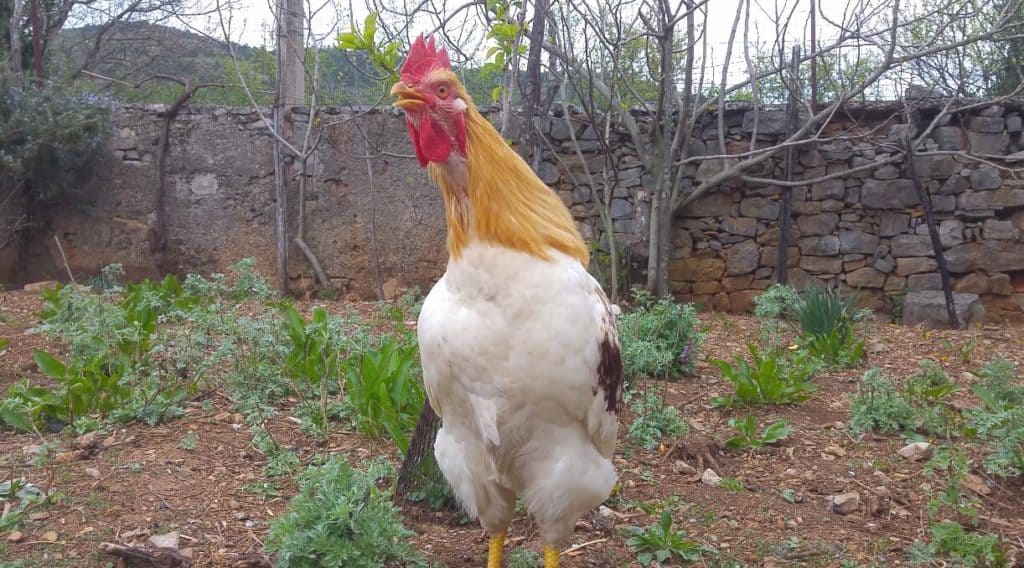
A lot of times, people discount listening for a crow as a way to sex a chicken. The idea is that by the time a chick is crowing, it’s large enough to visually see it’s a rooster. However, this isn’t always the case. Roosters will generally start crowing at about four months of age.
By this time, it’s true that most breeds already look like roosters. However, there are actually some instances in which a chicken actually begins crowing before you can visibly tell that it’s a rooster. In these cases, when all visual cues have failed you, you can simply listen for a crow.
There are other instances of chicks crowing as young as a month old. A one-month-old chick is still fairly gender-ambiguous visually. If you’re lucky enough to have roosters start crowing at a month old, you can be pretty positive you have a rooster.
Despite rumors to the contrary, we’ve never heard hen crow. People claim it happens, but in all our experiences with chickens, this has not been the case.
So if you have a month-old chick crowing or a half-grown chick whose gender you can’t determine, listen to see if it starts crowing. If a chicken has reached six months of age and still hasn’t crowed, it’s probably a hen.
Color of Their Down Feathers
In cases where the parents of chicks came from two different breeds, you can actually use the color of the down feathers to sex a chicken. If the parents of a chick are both from the same breed of chicken, this will not work. However, if you mix two separate breeds, the down is a great indicator of gender.
There are no standard colors we can give you to use. For instance, we can’t just say, “If your chick is light yellow, it’s a female.” It isn’t quite that easy. However, there are guides all over the internet to tell you what the down colors of different mixed-breed chicks mean.
If you do a simple Google search for “down color & gender in chicks with X and X parents,” replacing the X’s with actual chicken breeds, you’ll find what you’re looking for fairly quickly.
How Not to Sex a Chicken
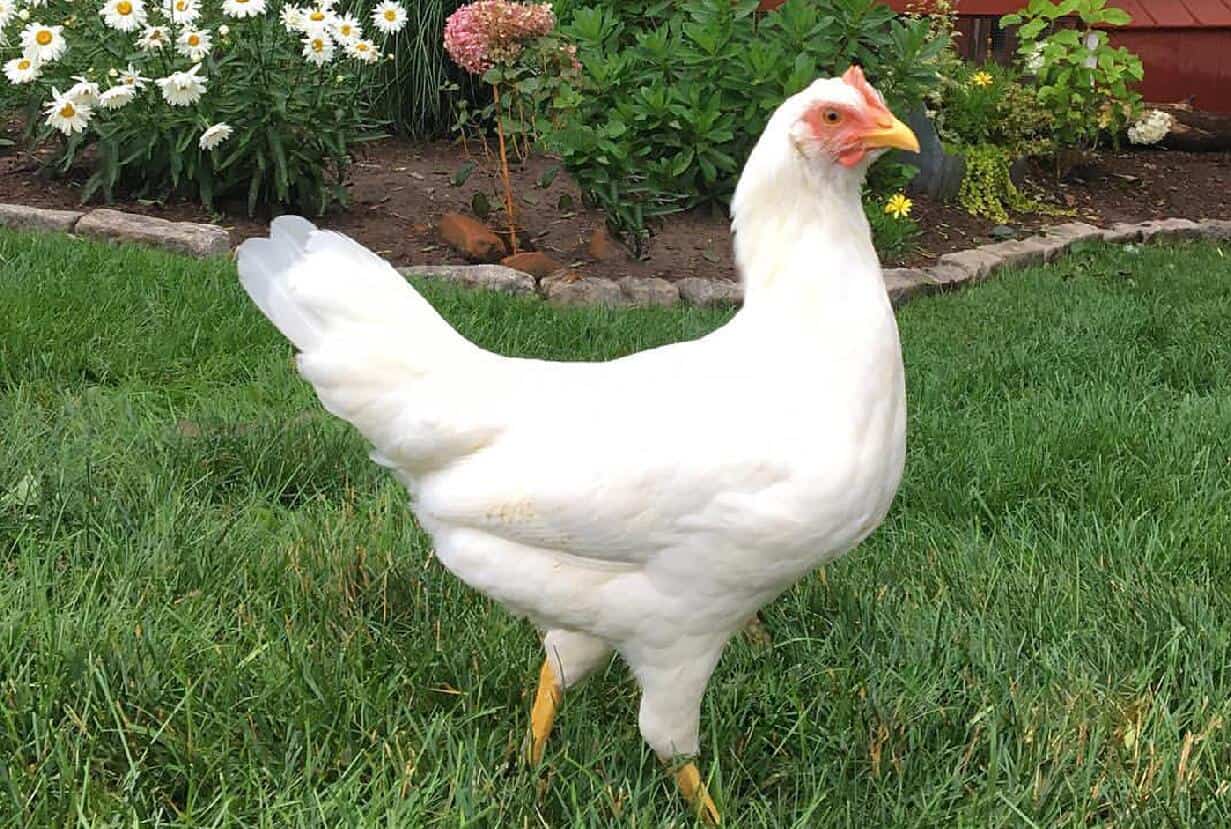
There are tons of old wives tales out there telling people how they can identify the genders of their chickens. Please don’t listen to these. The only credible ways to sex a chicken are those listed above. If someone tells you another “sure-fire” way to identify a chicken’s gender, it’s not going to be accurate.
Some of these old wives tales include the following:
The Shape of the Egg
For decades, people have been saying that you can tell the gender of a chick before it ever hatches simply by looking at the shape of the egg. It’s believed by some that if an egg is round, that egg contains a female chick. Conversely, if the egg is narrow and pointed, it’s believed to hold a male chick.
This is utter nonsense. The shape of an egg has literally nothing to do with the gender of the chick inside. Don’t fall for it. If you’re determining your chicks’ genders based on this, you’ll have just as much luck flipping a coin.
Turning a Chick Upside Down
Another false tale about determining gender involves turning a chick upside down. It’s believed that a female chick will stay that way, just hanging there limply. It’s believed that if the chick is a male, though, it will start fighting to right itself.
This, too, is nonsense. Furthermore, turning your chicks upside down can potentially hurt them. So please don’t flip baby chicks upside down. It will not give you any reliable information about the chick’s gender, and it could cause a lot of harm.
The Egg Float Test
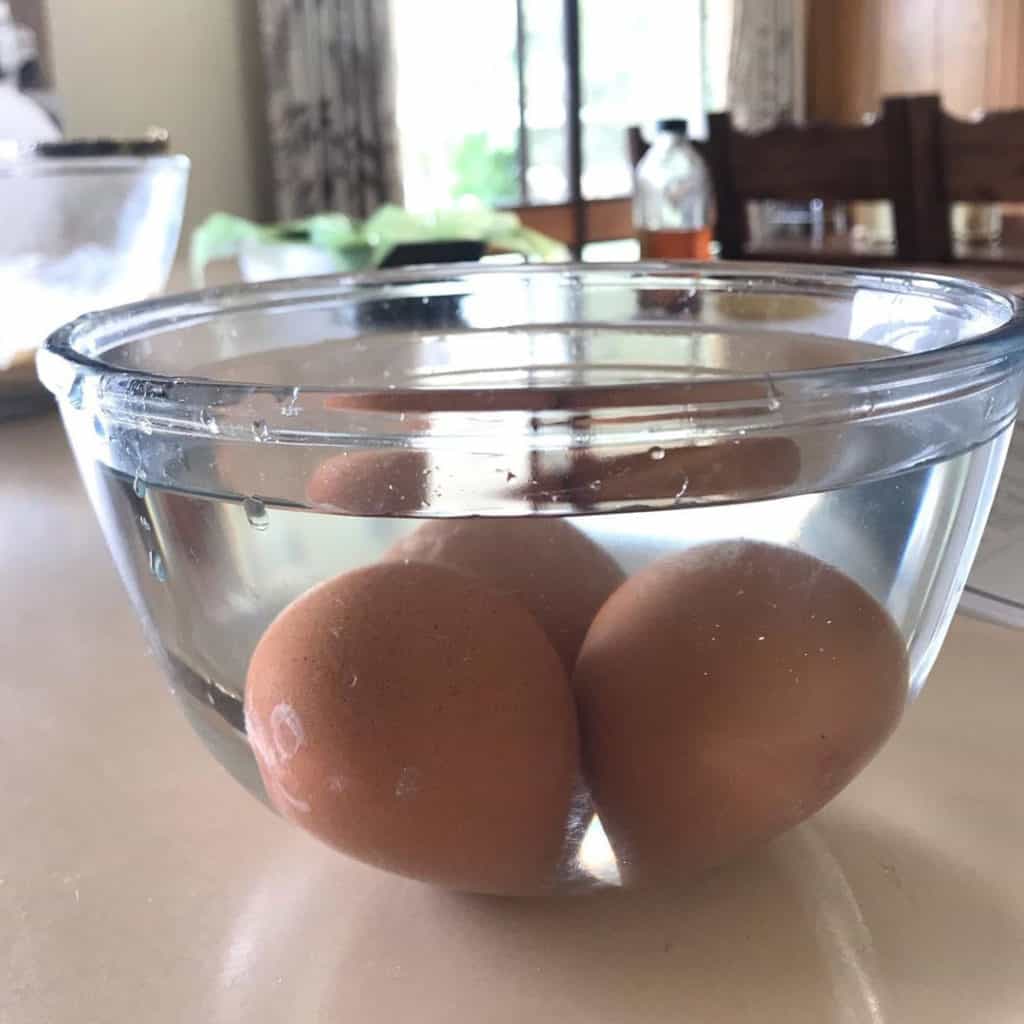
Another crazy story about determining gender is to put an egg in water and see if it floats. If it does, the egg is assumed to contain a female chick. If it doesn’t, the egg is supposedly home to a male chick. This is utter rubbish and can potentially kill the chick inside the egg.
There is actually an egg float test, but it has nothing to do with determining the sex of a chicken. What the egg float test actually does is tell you how fresh an egg is for eating.
You drop an egg in water. If it floats to the top, it’s an old egg and should be thrown away. If the egg sinks to the bottom of the glass of water and lays on its side, it’s a very fresh egg. If the egg sinks but sits upright, it’s not super fresh, but it’s still edible.
In Conclusion
There are six reliable ways to sex a chicken. Of these six ways, there are only two (venting and feather sexing) which are incredibly reliable; we’ll say 90%. Listening for your chick to crow is also a very reliable way of determining gender, although it’s not always helpful if the chick is half-grown before it crows.
The other ways are less reliable, but they can still be effective. They are also less invasive than venting or feather sexing. Other than these ways, there’s no other reliable way to sex chicken. Please avoid old wives’ tales, and be aware that mistakes do happen. Never count your chickens before they hatch, and never count your roosters before they crow.
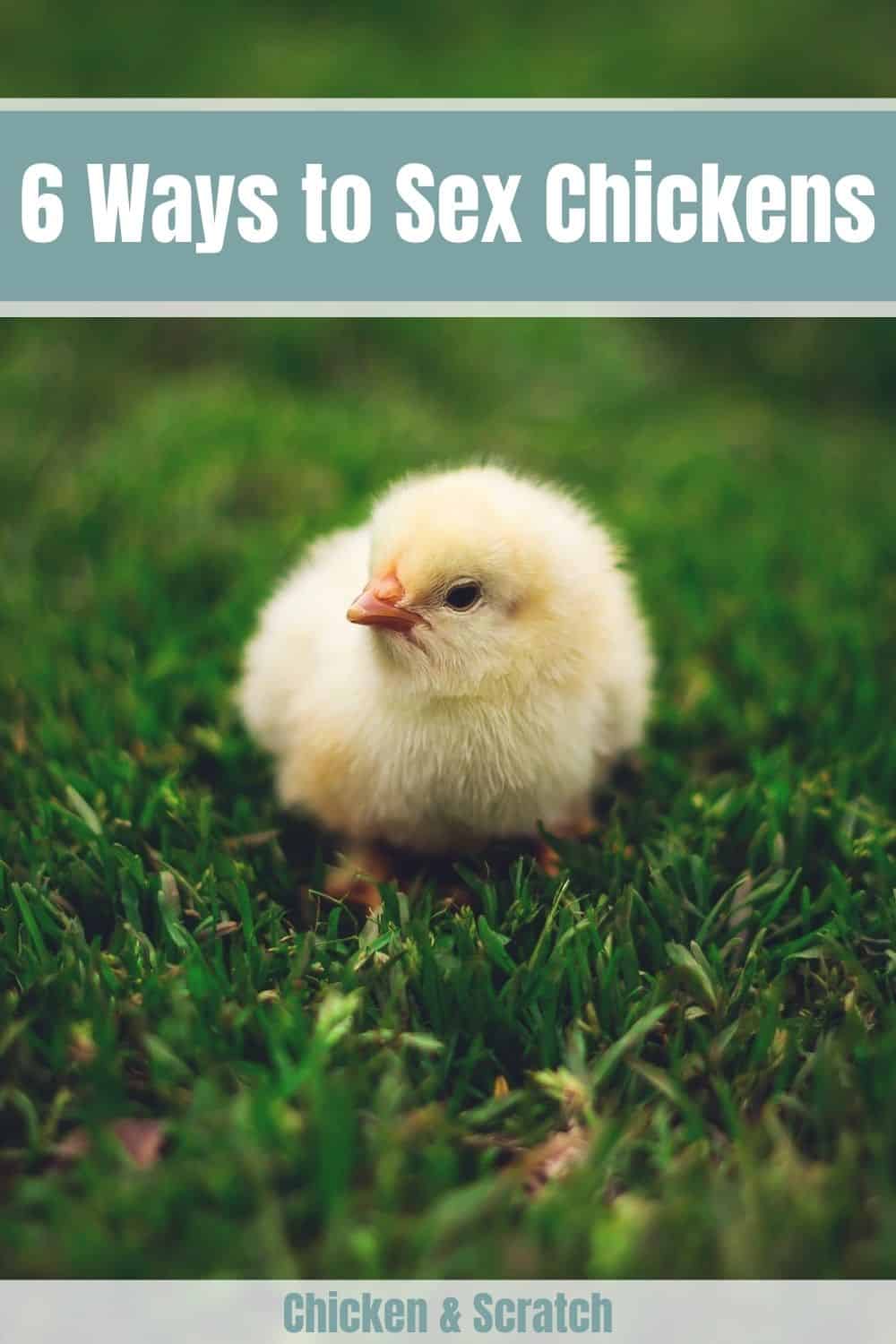

Joseph Hudson has been raising chickens for over 15 years. In 2018, he completed the Agriculture & Natural Resources program at Mt. San Antonio College. He currently raises over 1400 chickens on his 7.5-hectare farm. He keeps sharing his experience on raising healthy and happy chickens on Chicken Scratch The Foundry.
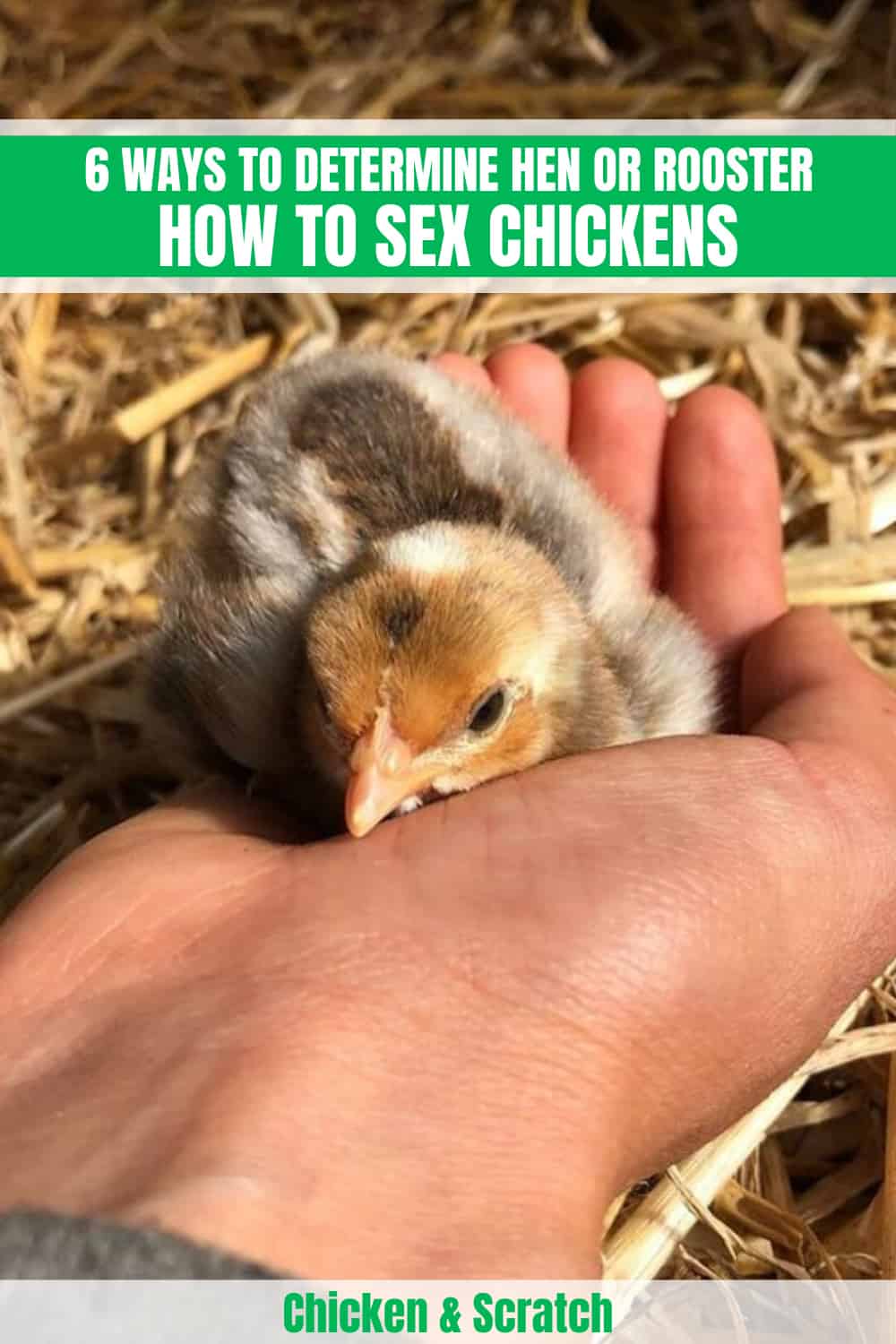







I actually have a hen that crows in the mornings and has done ever since our rooster was killed by stray dogs. I have video of it if you ever want to see it.
Send me the video please
I want to see!! Lol.
I also have seen a hen crow
I would love to see it.
Got a question that may sound funny but there might be trans chickens too right ?
Only if they went to public school!🤣
I must say I have an older hen that was past her laying time, she developed a large waddle and comb like a rooster and her tail stood straight up. But no crowing!
I had the same thing happen. Henrietta became Henry
This unusual transformation is called spontaneous sex reversal and it most commonly occurs in hens, causing them to physically transform into roosters. It is noteworthy that there are rare cases of roosters reportedly also being able to undergo sex reversal – thereby becoming hens and even laying eggs.
If you add a rooster back into the flock does it revert back to a hen?
You’ve watched it lay an egg? Cause I’d say it’s actually a rooster! And your dead rooster was the dominant one till he died. I have the same thing, a dominant rooster, my other rooster doesn’t crow
That’s called a transgender chicken, I’ve seen a few in my day, most of the time there grow spurs, they may be small though, and some will even go as far at to grow a bigger comb, looking the part, although they will no longer lay eggs normally, they don’t fertilize the eggs or even try to.
I have a hen that crows too.
I won’t to see
Hi my name is Lawrence I’m from South Africa. I have three chicks abt 2wks old. I would love to know their sexes but mother hen is very protective and pretty aggressive. Please advise me I’m very new to this.
Kind Regards and Best Wishes.
I have a hen that crows, too. She is a black bantam Cochin. I bought her at an auction just over a month ago. The owners said she was 9 months old. Her crow is pretty pathetic and sounds like a cockerel attempting to crow in those first weeks. She is also dominant acting to the other hens. I’ve never seen the rooster breed her. She does lay as she did when I quarantined her when I brought her home. I was lucky enough to record an audio of it, but I reckon most nonbelievers would want to see it. She never does it when I have my camera out… lol
You will get a old hen crowing if your rooster has been killed.no where near as good as a roosters crow, but they still do it. I have kept chooks for about 50 years and i have had a few crowing hens.and they act aggressive towards other hens.
I have only one lonely hen left after a dog got in and killed the others. She hears a distant rooster and crows in reply. Just for contact I think. I’m getting new chicks which will help her I think
To the point and so informative. I thank you Joseph!
I’ve had hens that take on rooster characteristics being aggressive and sorting out squabbles with the hens.
This has usualy when there’s been the lack of a rooster.
But they have sometimes been aggressive to newly introduced roosters aswell.
I also have a hen who crows occasionally. She is very aggressive towards the other hens and even stretches her neck up and gives me the stink eye. She is the same size as the other hens and lays eggs. I watched her crow myself. It was not as loud as a rooster and sounded like a rooster who was a novice at crowing but distinctly a crow.
I have a hen that crows too. She did lay eggs but stopped when she started crowing.
Yes, the feather sexing is reliable. I once went to the local feed store and decided to save some money by picking out chicks from the straight runs. I did a good job, but I had it backwards! I ended up with 7 roosters and 1 hen!
I hadabrooder she raised7 chicks all 7 turned out to be roosters !!
It’s important to note that many Bantam breeds are more fragile. Silkie chicks in particular. For this reason Silkie breeders cannot vent sex their chicks and the best way to know if you are buying males or females is to purchase DNA tests on the chicks before you buys them. The cost for DNA testing is around 12 dollars per chick.
I am a vet…and am looking for farmers who can hire me I am able to take care of small chicks and the grown ones…dispute all this ihave come up with a sure treatment of Newcastle and all CRDs diseases
phone:0704698910
If a 🐓roosters have throat problem, they can’t release the voice easily & can’t crow in fully sounds. Tell solution.
Hello, This might be a strange question but I would like to use your image utilizing the wings of the chicks for sexing. I am an educator in Corpus Christi, Texas and we are doing an embryology series with students in our area. Your image is wonderful on capturing that. I would give credit to your site and name. Thank you so much for your time. Thank you
So if you put the egg in water it can drown, so what about the baby test if it floats there is a baby if it sinks then no baby chick, seems like there is conflict
If you are curious to see if an egg is developing, the safest method is to candle the eggs in question. That is, putting the egg to a light and if it is developing you will see growth as, veins in early stages, and darker spots in later development. Google has many charts and images of developing eggs. The float test is strictly a freshness test.
Out of curiosity, does when the chicks hatch have any validity in sexing? I set eggs under broody hens and they were supposed to hatch today but 3 hatched Monday, 2 hatched Tuesday, 3 hatched Wednesday, and 2 hatched today Thursday 5/19/22. I’m wondering if there’s a possibility that either male or female tend to hatch early or late? I set all 10 eggs out under 3 hens the same day April 28th so I don’t really know why they hatched all spread out like this but I’d like to know if this has been observed with any accuracy?
The eggs weren’t payed on the same days
if the egg floats whatever is inside is already dead becase its rotten?!?!
I’ve raised chickens for almost thirty years. I have had two hens that routinely crowed…even with the rooster in the pen with it…..and, yes, they layed eggs. Both of mine were bantam breeds. Don’t know if that has anything to do with it. Their “crowing” however, sounds like they are being strangled:). I can always tell from a distance whether it is the rooster crowing or the hen.
Where are quail birds traded
Thanks so much for this informative article! For Feather Sexing, the image tells the story, but I did not manage to understand the video. In the video, the first yellow chick was male and the second yellow chick was female. Could you please elaborate a bit more on the difference in feathers between these two chicks? Thank you!